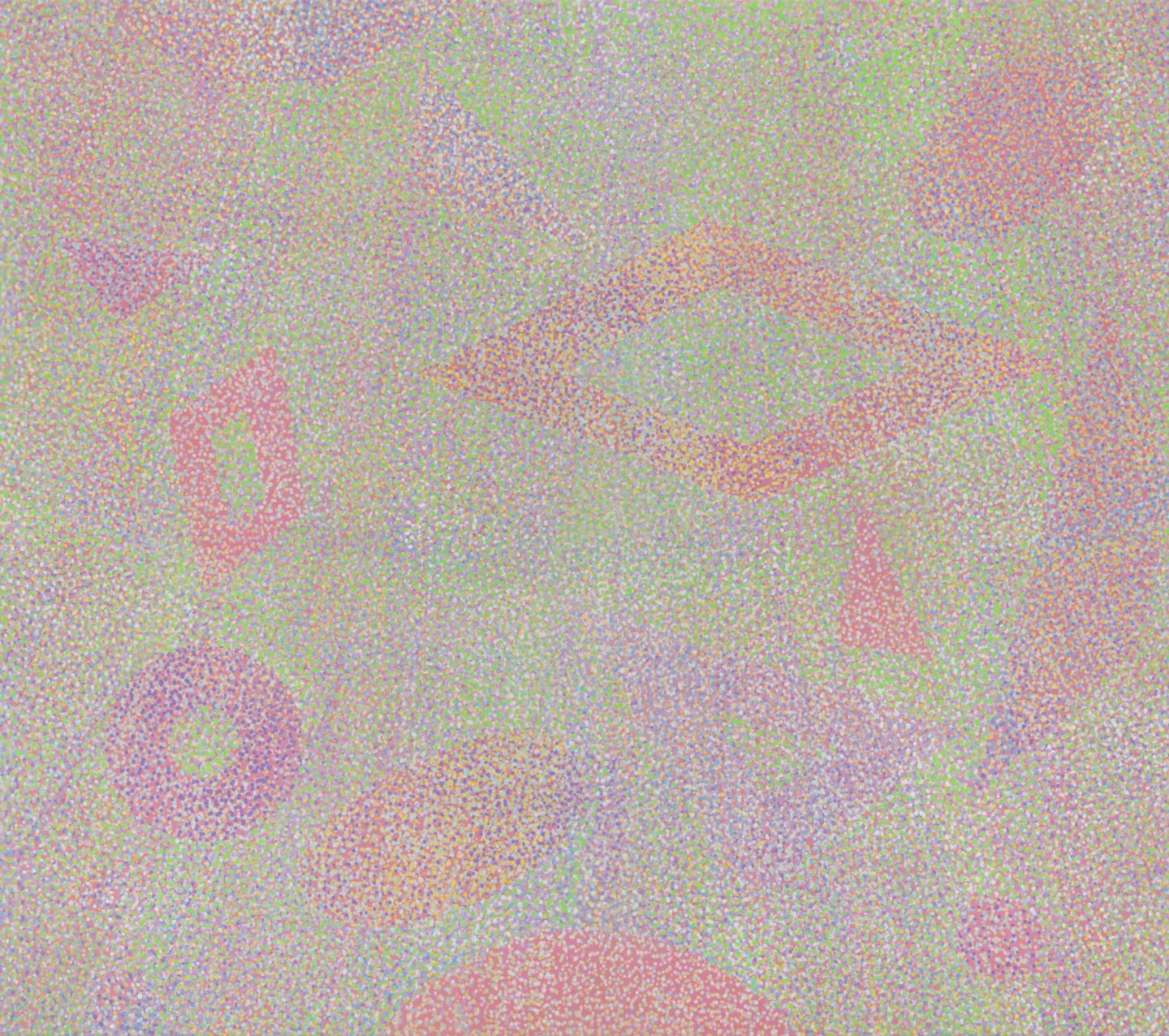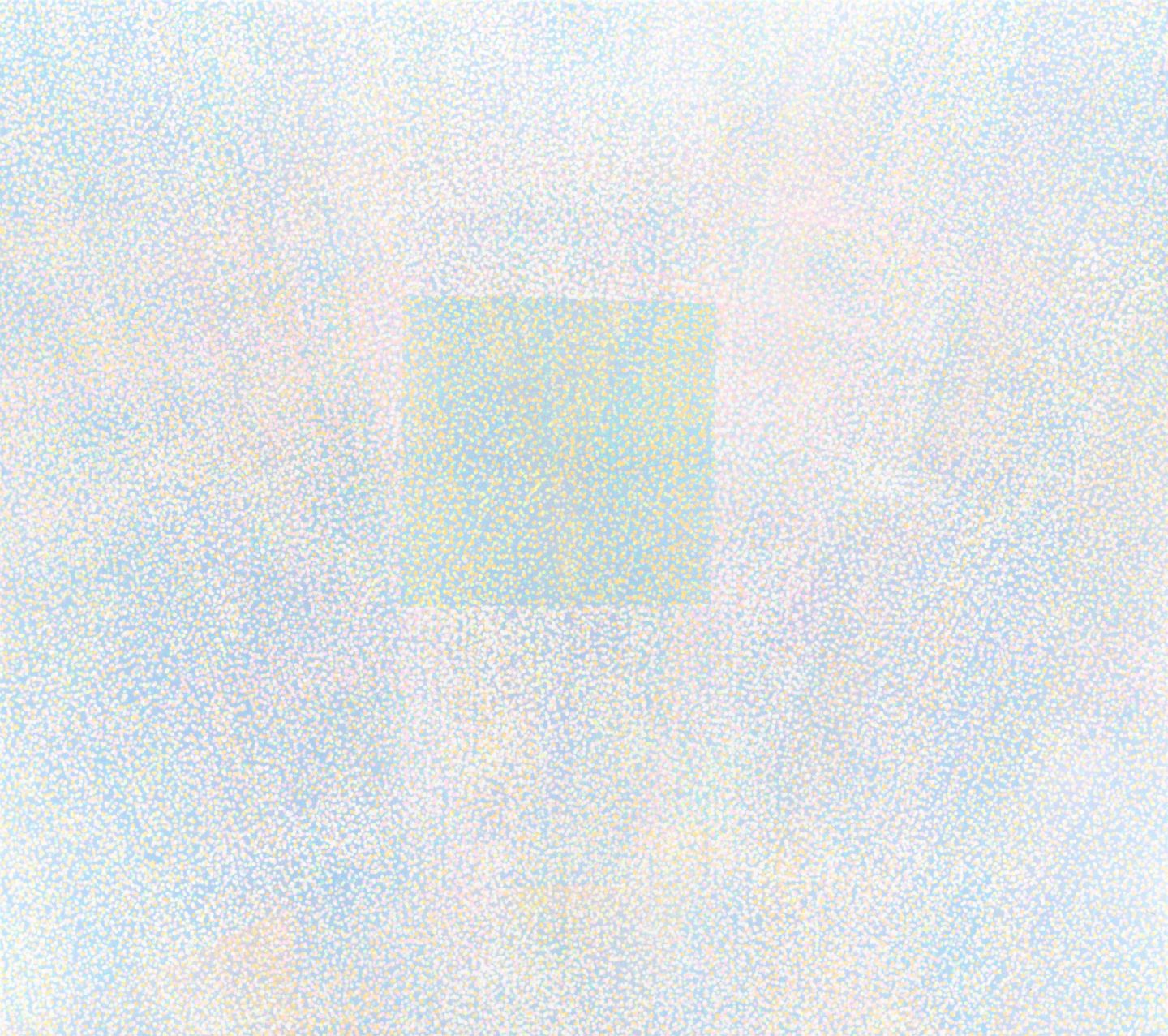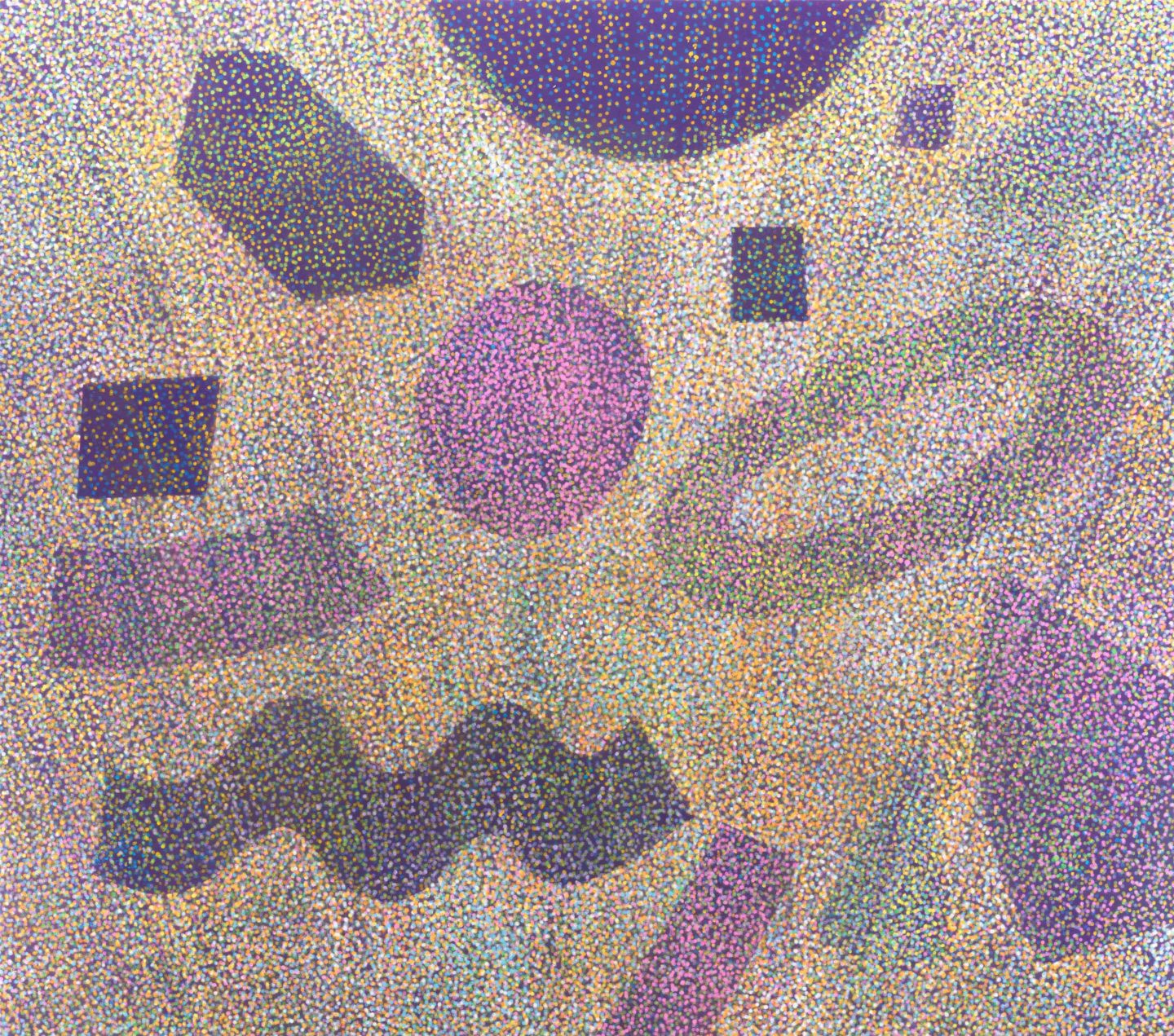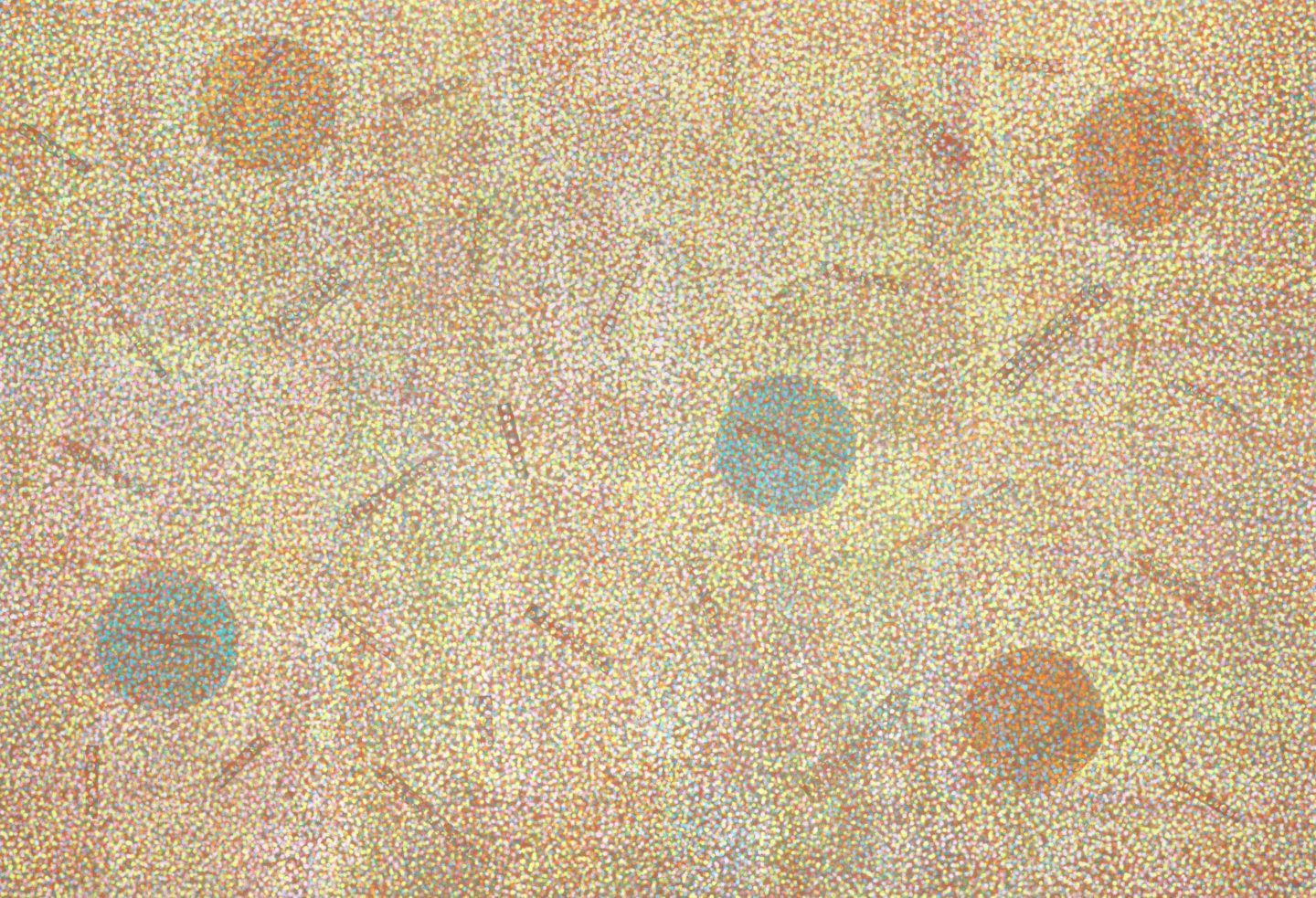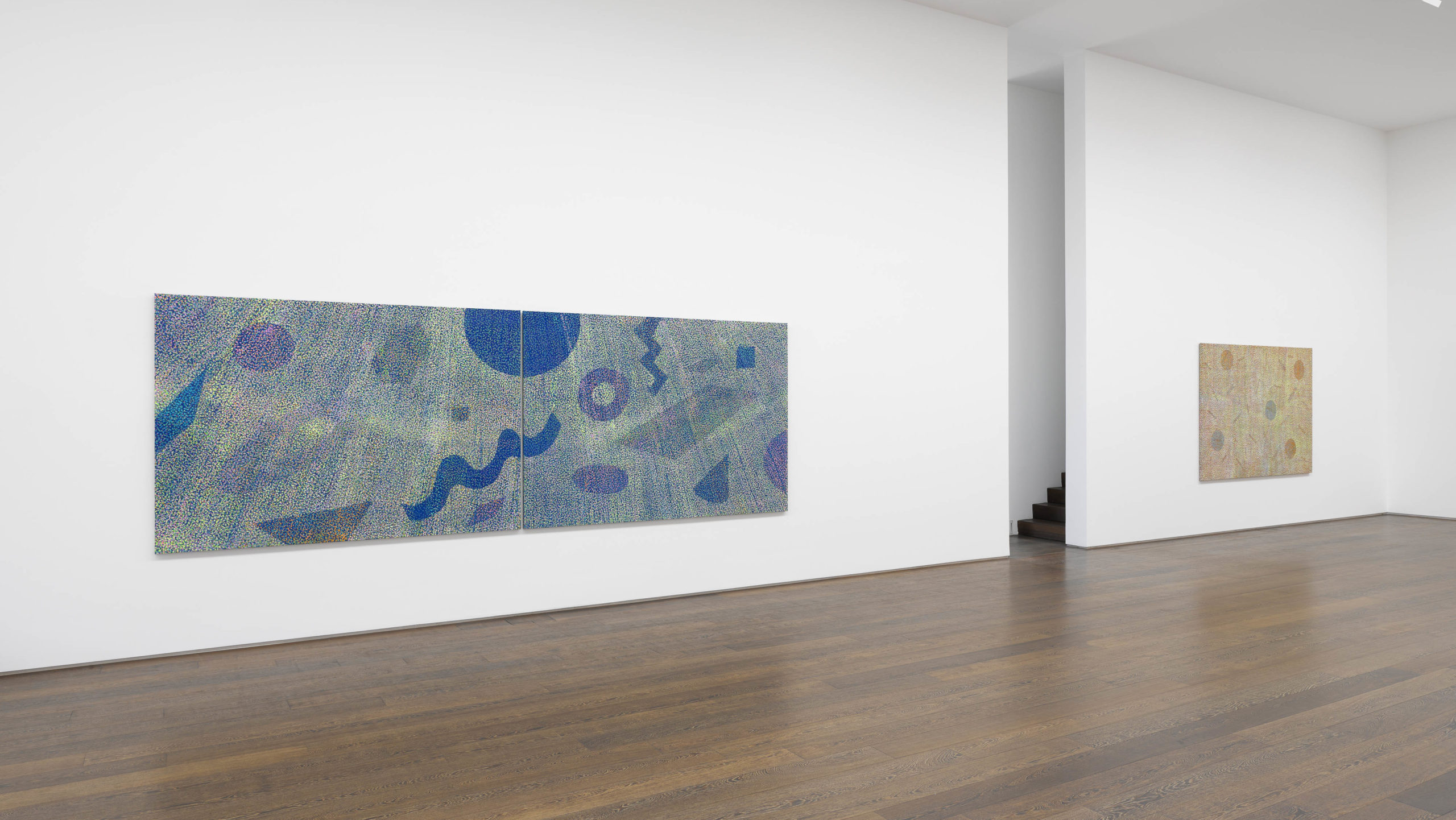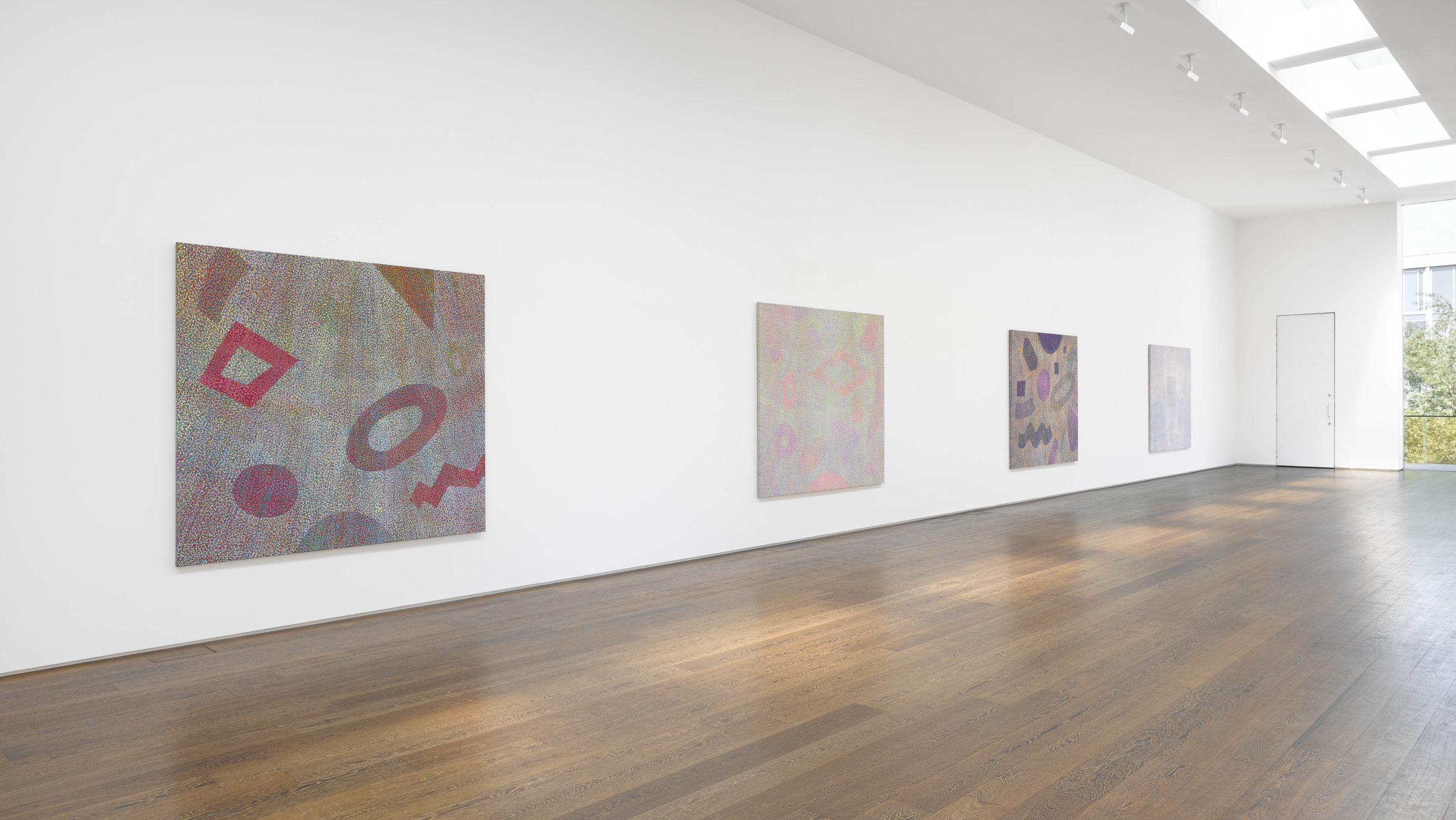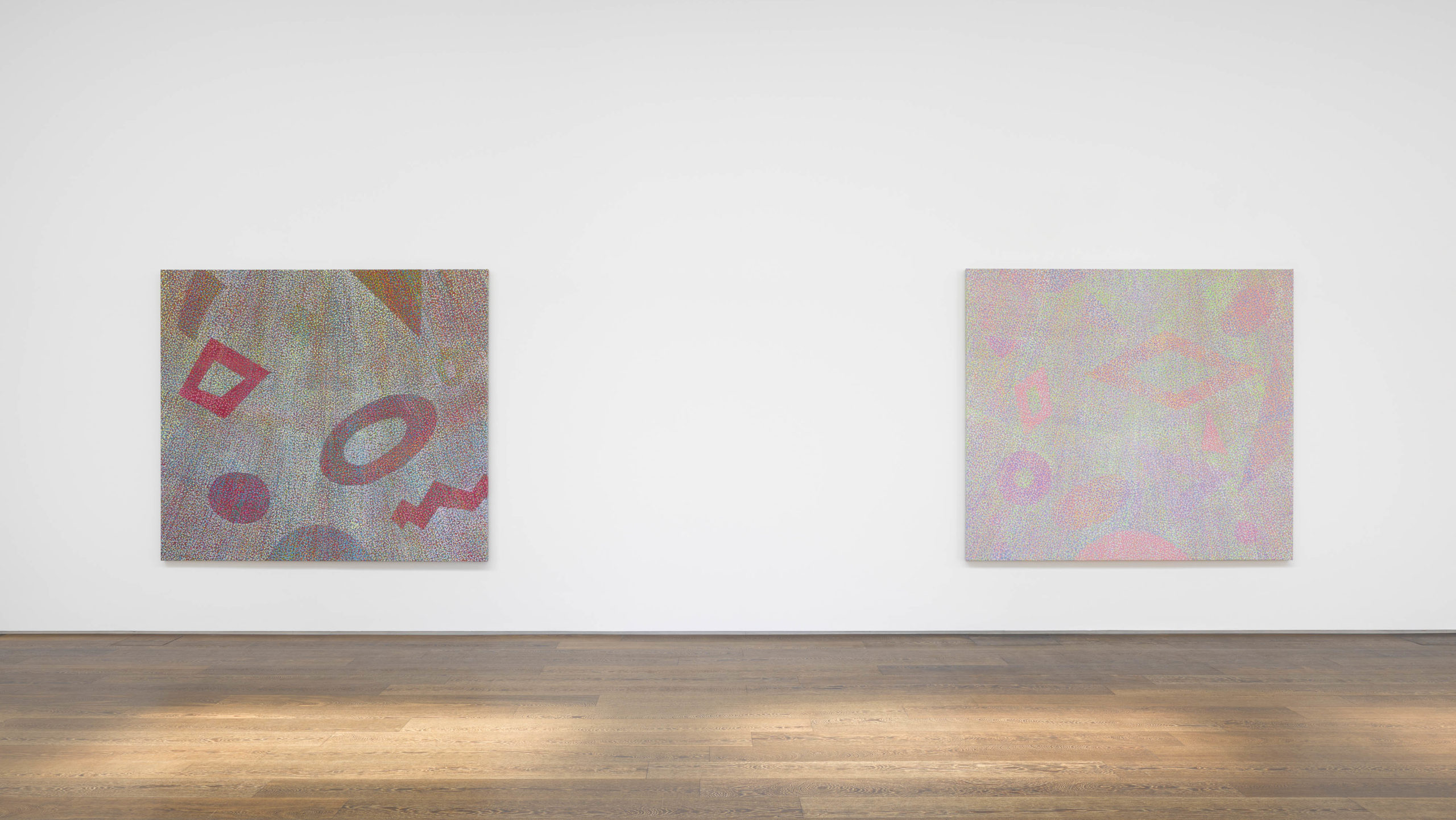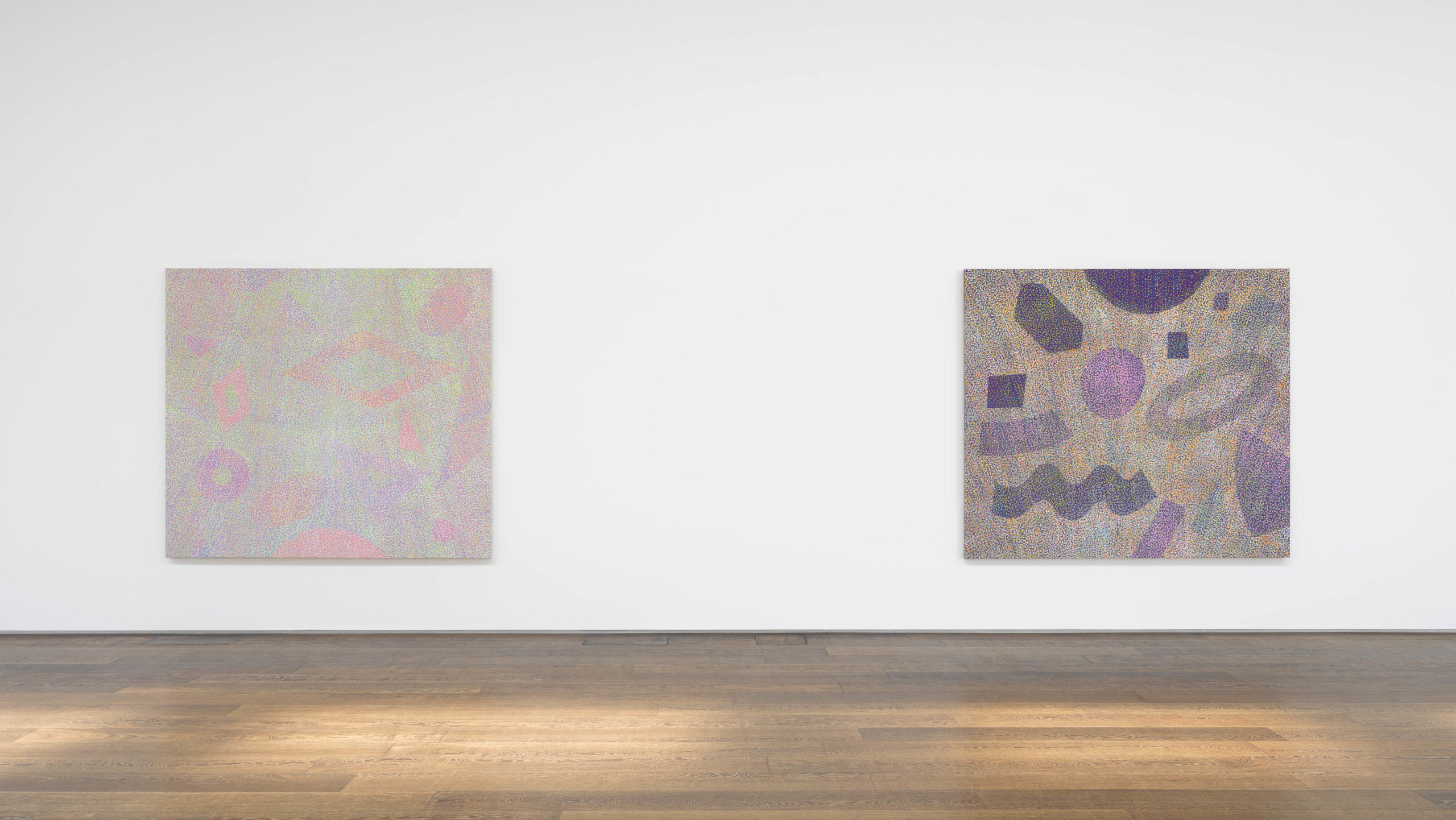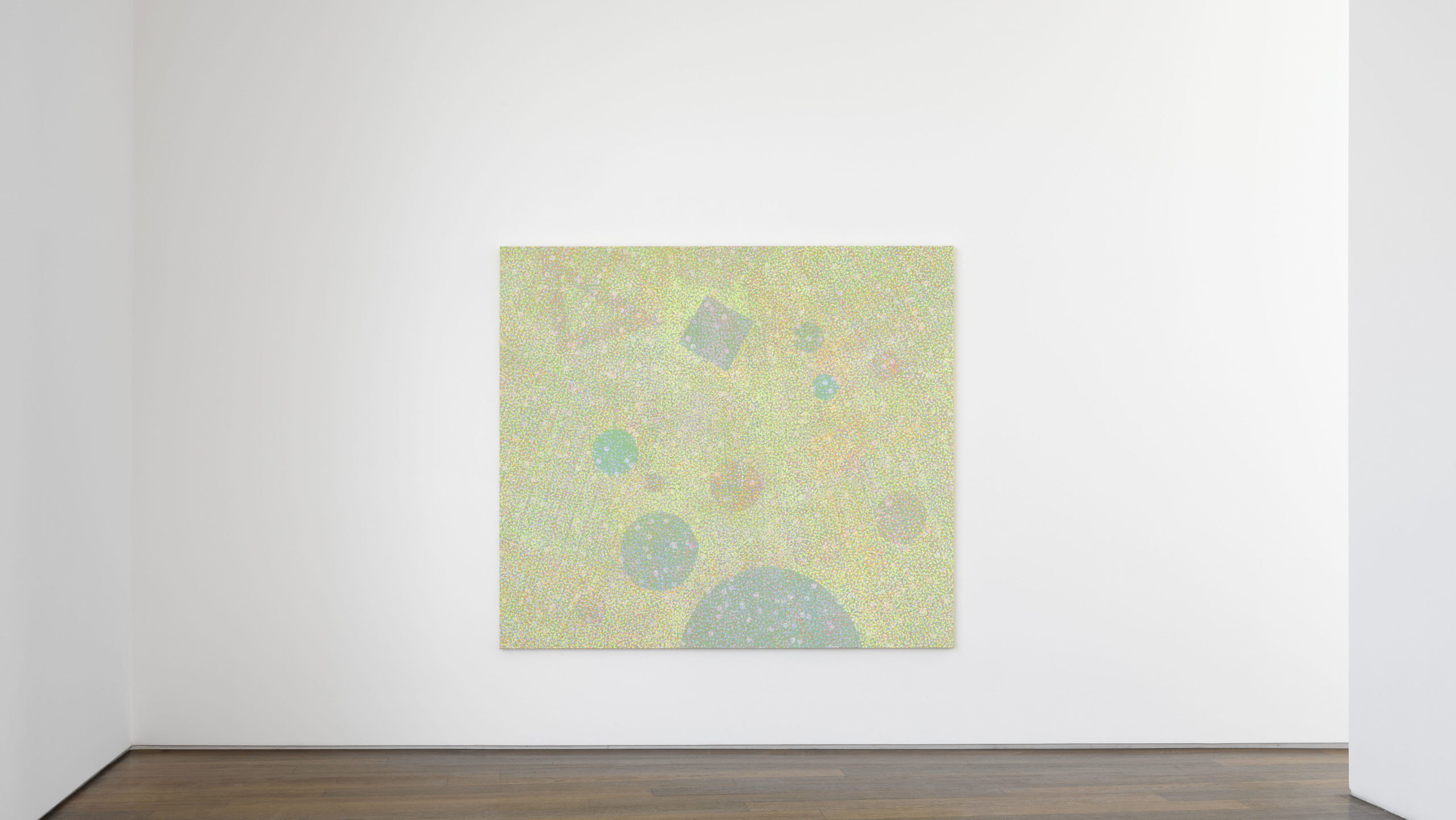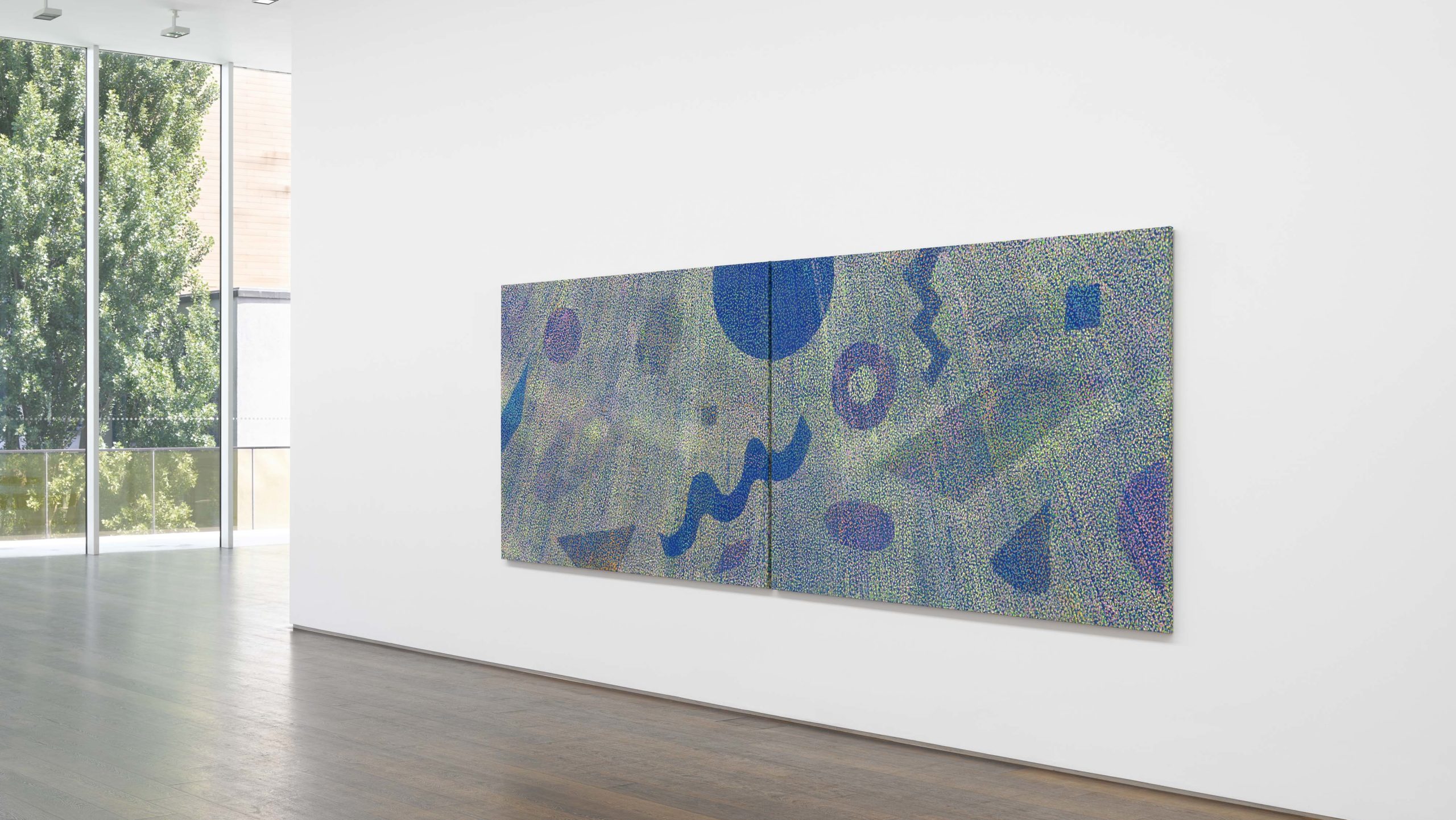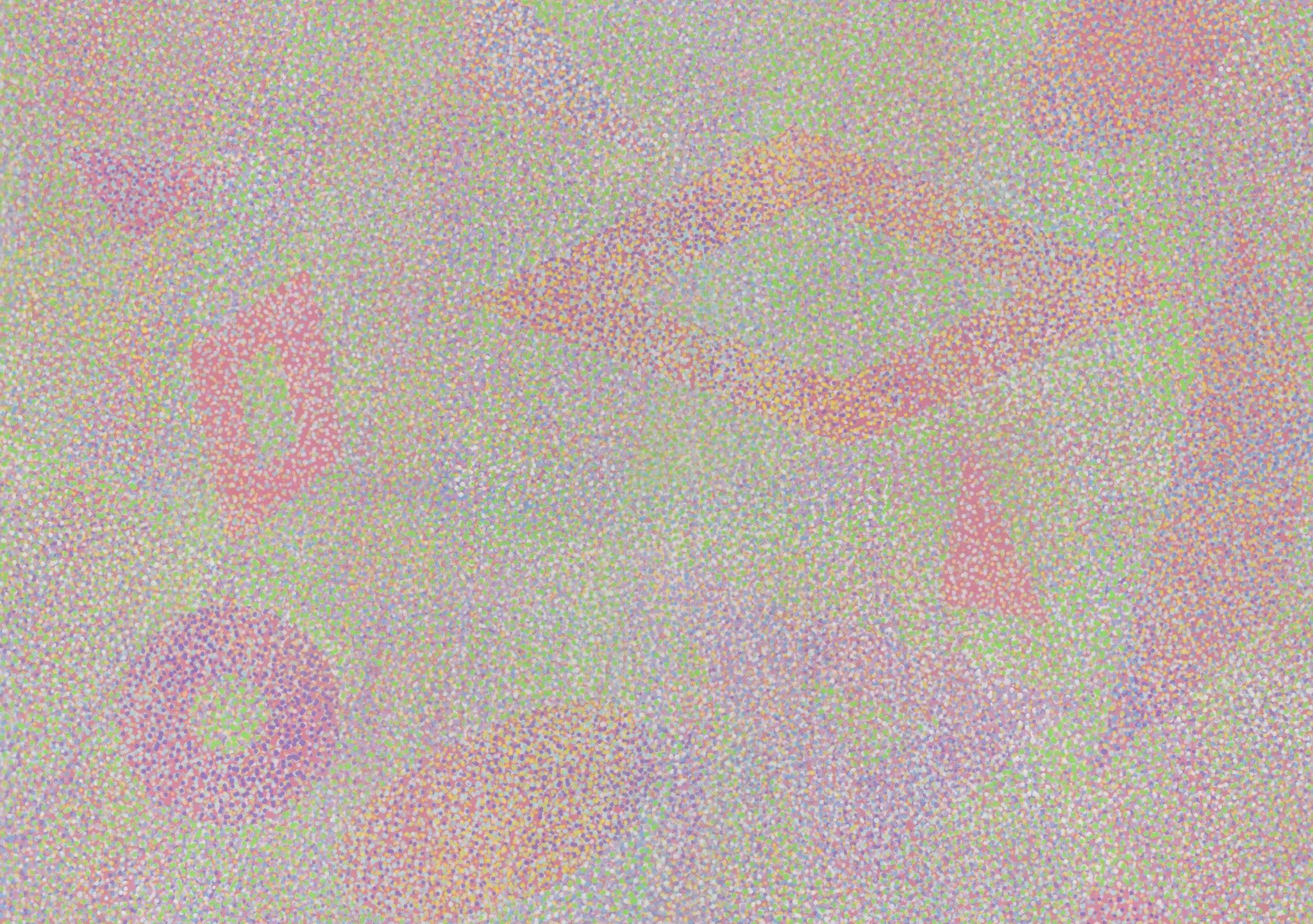
Howardena Pindell: New Works
Exhibition 8 June–29 July 2023
Tuesday–Saturday: 10am–6pm
16 Wharf Road, London N1 7RW
Victoria Miro is delighted to present an exhibition of new spray dot paintings by Howardena Pindell.
Howardena Pindell’s spray dot paintings are among her most iconic works. The artist first created these sensuous paintings in New York in the early 1970s. Using various hole punchers and tools, she punched into discarded cardstock, manila folders and heavy watercolour paper, the result of which she used as templates, spraying paint through the perforations across large-scale canvases to create fluctuating veils of colour.
In the past few years, for the first time in decades, Pindell has revisited this technique with renewed creativity and excitement, integrating geometric shapes and experimenting with different sizes of dots across these fields of colour. Conceived for the gallery in London, this exhibition marks the first solo presentation of these new works, featuring a monumental diptych.
HP 1
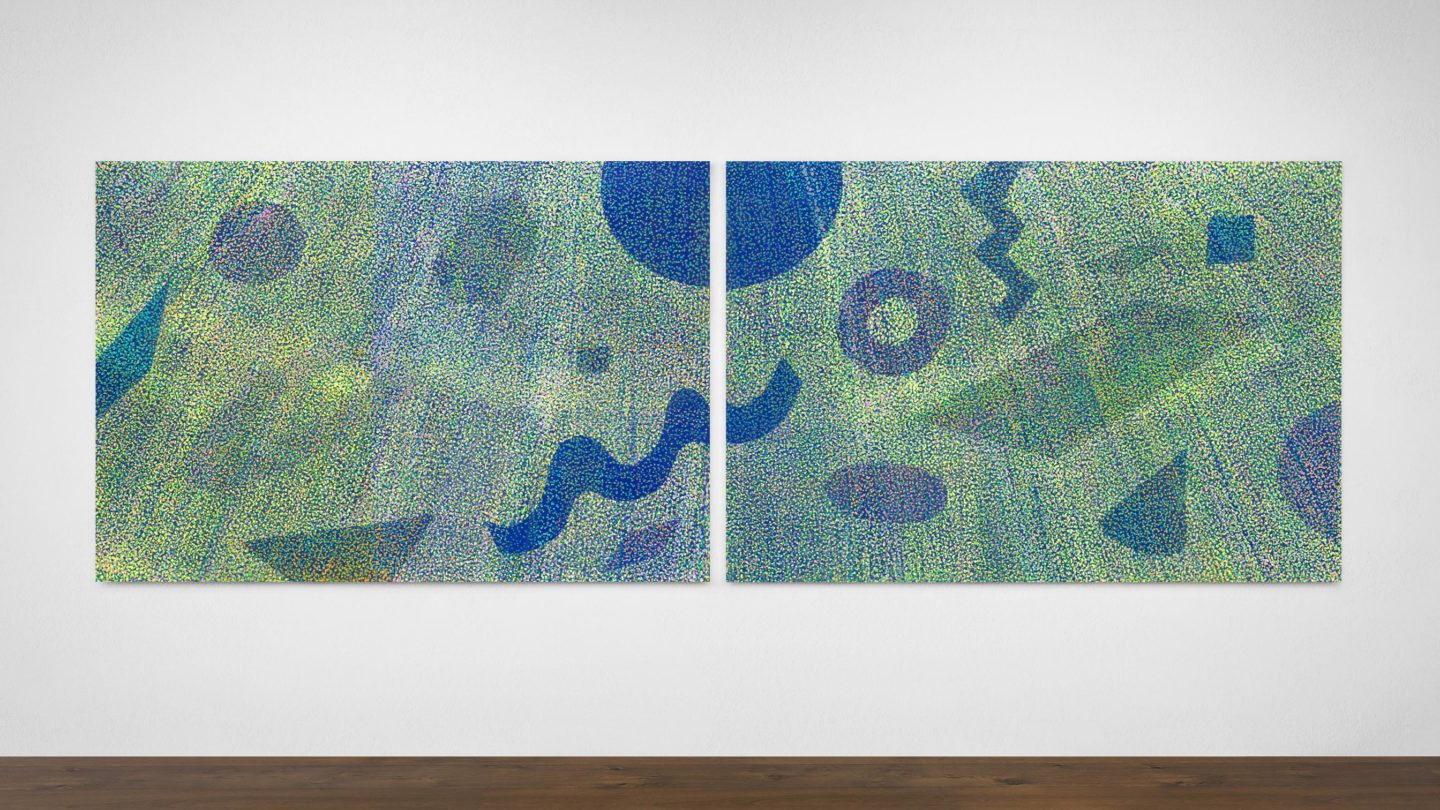
Acrylic on canvas
Two panels, each measuring 165.1 x 241.3cm / 65 x 95in
Overall dimensions: 165.1 x 482.6cm / 65 x 190in
Howardena Pindell, Tesseract #4, 2023
More info‘Some of the canvases have almost a cosmic aspect to the floating geometric forms as if one were looking at the night sky with a telescope into the universe – even more so with the diptych.’ — Howardena Pindell
HP 2
‘One of my best subjects in school was geometry. Later, at Yale, I took Josef Albers’ colour course and that changed my life. But it’s all intuitive. You have to see what it is when it is, not in advance.’ — Howardena Pindell
Each of Pindell’s spray dot paintings investigates themes of control, chance and the interaction of colour according to saturation and hue – topics that have been of interest to the artist since the beginning of her career. She describes her relationship to colour and its application as an intuitive process, with Josef Albers’ colour theory course at Yale University a catalyst in her development from figuration to abstraction early in her career and a touchstone of her practice. While studying at Yale, a fellow graduate student’s use of the circle awakened a childhood memory in Pindell; on a road trip with her father in Kentucky, she was served a mug of root beer with a red painted circle on the bottom – the circle indicated the separate utensils and serving ware for Black people in the Jim Crow era South. Pindell’s repeated use of the circle, which she describes as ‘an iconic form that appears on a cosmic scale in nature,’ can be read partly as an act of catharsis and transformation – she is fascinated with its appearance across the natural world, from molecules to solar systems, and with its subliminal potency as a shameful cultural artefact in US civil rights history.
HP 3
The artist’s process might be considered a kind of pointillism freed from the burden of representation. Through repeated action, Pindell’s ranks of dots, grid-like in essence, become energised optical fields, supporting myriad fluctuations of colour, tone and light. Often appearing predominantly as a single hue from a distance, up close the paintings unfold as a series of shifting sensations, one colour pulsing with or against another, the energy of these constituent parts taking on a different character in minutiae, akin to cells or pixels. Pindell’s expansive canvases are the result of years spent thinking about studies into the great range of emotional responses elicited by colour, discussions surrounding the meaning and cultural significance of colour, and colours found in the natural world, such as glaciers, bioluminescent plankton, and solar storms.
HP 4
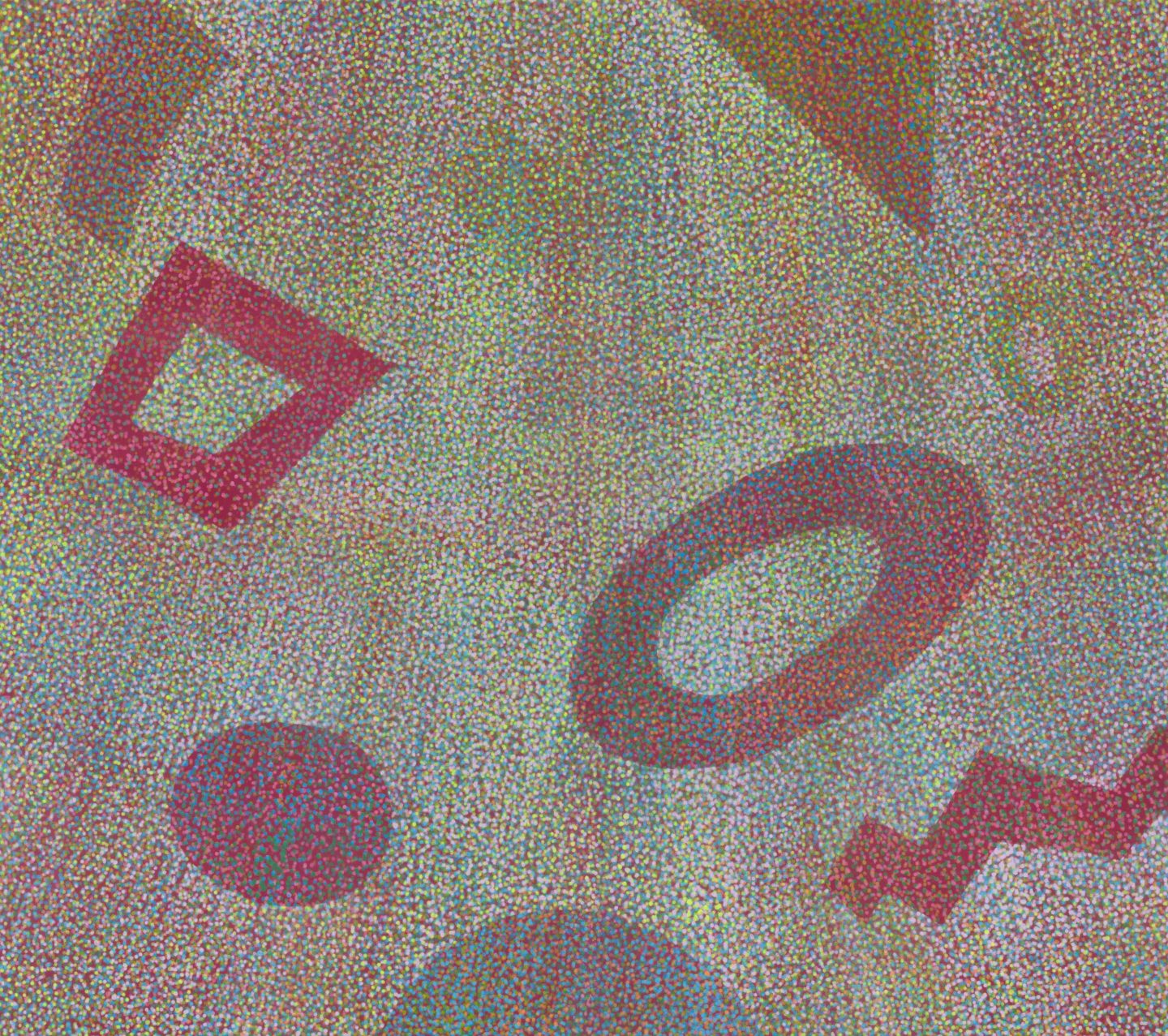
Acrylic on canvas
198.1 x 223.5 cm
78 x 88 in
Howardena Pindell, Tesseract #2, 2023
More info‘Templates are removed for each layer, leaving geometric patterns of different colours. It’s very exciting to reveal the painting. That’s the best part of it because you can’t really visualise what the result will be.’ — Howardena Pindell
In this latest body of work, she has been experimenting with free-flow geometric forms, drawing upon her childhood memories of what she saw under a microscope when she noticed the Philadelphia drinking water teeming with life. More recently, she has acquired a professional microscope in order to look at nature close-up and discover new forms to use in her art. Informed by her understanding of geometry but judged by eye, these paintings feature fields of radiant dots punctuated by larger circular and quadrilateral shapes that provide rhythmic interplay between background and foreground. These developments add further complexity to works that, symphonic in their structures and rhythms, reveal new variations as the artist advances her exploration of colour and its effects, resonating emotionally, conceptually and perceptually. Meditations on the relationship of form and colour, they make evident her continually evolving practice and approach to the micro and macro; as she notes, ‘I feel like I am a tree with many branches’.
About the artist
Born in Philadelphia in 1943, Howardena Pindell has exhibited extensively throughout her career. Howardena Pindell: A New Language, the artist’s first solo exhibition in a public organisation in the UK, was on view at Fruitmarket Gallery in Edinburgh (13 November 2021–2 May 2022), travelling to Kettle’s Yard, Cambridge (2 July–30 October 2022), and Spike Island, Bristol (18 February–21 May 2023). The exhibition will be on view at the Irish Museum of Modern Art, Dublin, (29 June–5 November 2023). Recent institutional solo exhibitions include Howardena Pindell: Rope/Fire/Water at The Shed, New York (2020–2021) and the major survey exhibition Howardena Pindell: What Remains To Be Seen, which toured from the Museum of Contemporary Art, Chicago (2018) to Virginia Museum of Fine Arts, Richmond (2018) and Rose Art Museum, Brandeis University, Massachusetts (2019).
Pindell’s work is in the permanent collections of major museums internationally, including Albright-Knox Art Gallery, Buffalo; Brooklyn Museum; Corcoran Gallery of Art; Fogg Museum, Harvard University, Cambridge; High Museum of Art, Atlanta; Louisiana Museum of Modern Art, Copenhagen; Metropolitan Museum of Art; Museum of Contemporary Art, Chicago; Museum of Modern Art; Museum of Fine Arts, Boston; Museum of Fine Arts, Houston; National Gallery of Art, Washington, D.C.; Pennsylvania Academy of the Fine Arts, Philadelphia; Philadelphia Museum of Art; Rose Art Museum, Waltham, Massachusetts; The Studio Museum in Harlem; Smithsonian Museum of American Art, Washington, D.C.; Virginia Museum of Fine Arts, Richmond; Wadsworth Atheneum, Hartford; Walker Art Center, Minneapolis; Whitney Museum of American Art; Yale University Art Gallery, New Haven.
